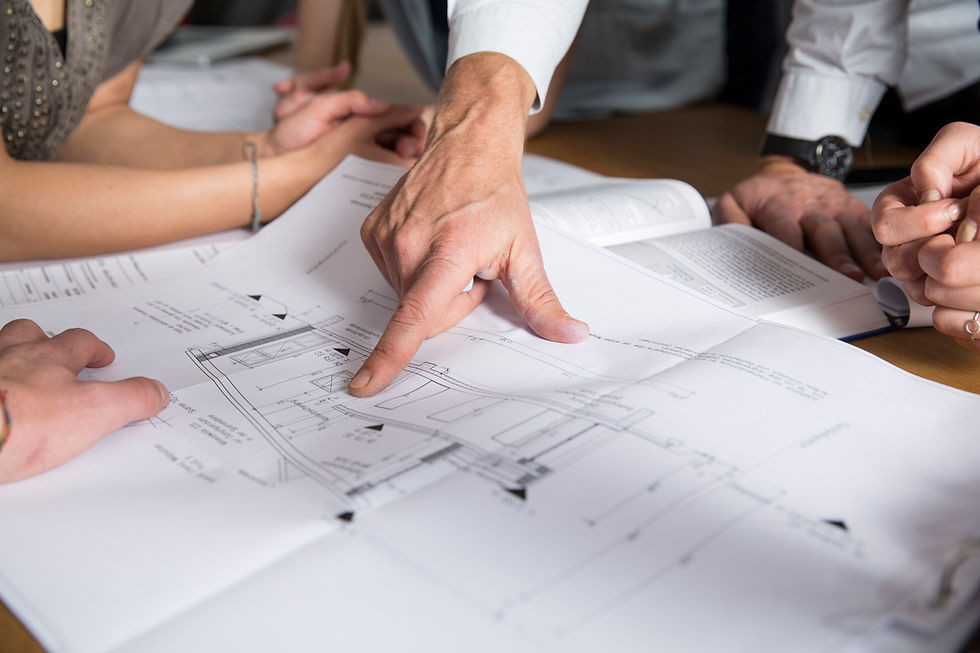10 Harsh Truths honest architecture industry quotes that Architects Wish Clients Knew
- Dennis Asis

- Jun 21
- 4 min read

Architecture is a captivating blend of art and science, but it can often lead to misunderstandings between architects and clients. Understanding these ten harsh truths can help bridge the gap and lead to successful projects.
1. "Your budget is not going to cut it."
Many clients come to architects with grand visions that do not match their financial resources. Architects often find themselves struggling to balance dreams with realities. For example, a beautifully designed kitchen with high-end appliances and natural stone countertops can easily exceed budget expectations by 20% to 30%. It’s important to grasp that quality materials and skilled labor come at a premium.

2. "Yes, we do care about your aesthetics, but function comes first."
While aesthetics are important, functionality is the primary focus of any architectural design. A stunning open-concept living space may look appealing, but if it doesn’t meet your family’s needs, it loses its value. Architects prioritize creating environments that are easy to navigate and serve their intended purposes effectively.

3. "Construction timelines are more of a suggestion than a promise."
Clients often believe that once the design is finalized, construction will proceed smoothly. However, statistics show that 60% of construction projects face delays due to unforeseen issues like weather or permit holdups. Understanding this can take away some of the stress experienced during these projects.

4. "Design changes after the plan is set will cost you dearly."
Changing your mind midway through a project can drive costs up significantly, with some clients seeing changes add anywhere from 10% to 25% to their overall budget. Each alteration can disrupt the carefully laid plans and timelines. A decisive mindset before starting the project can save both time and money.

5. "Not all your dreams can fit in that space."
Every space has its limitations governed by local zoning laws and building codes. Architects often need to think creatively to accommodate client desires within the confines of existing structures and regulations. For example, what might fit in a 2,000 square foot lot could be rejected on a 1,500 square foot lot, emphasizing the need for flexibility in vision.

6. "We are not here just to draw pretty pictures."
Many clients see architects solely as artists who generate beautiful designs. In reality, architects manage a complex array of tasks. This includes project management, code compliance, and safety regulations, to ensure every design is practical. For instance, architects spend about 40% of their time on administrative tasks, which is crucial for a smooth project execution.

7. "You can't always have it all. Pick two: cheap, fast, or good."
This well-known adage highlights a critical truth in architecture. Clients often want projects that are low-cost and delivered quickly, without sacrificing quality. Understanding that they may need to compromise means keeping expectations realistic. Typically, choosing any two directly impacts the third.

8. "Sustainable doesn’t always mean more expensive, but it often does."
As awareness about environmental footprints increases, clients are increasingly interested in sustainability. However, it’s often the case that sustainable options come with a higher initial cost. For instance, while solar panels could initially seem expensive, they may reduce energy bills by up to 40% over time, making them a smart long-term investment.

9. "Master plans are living documents."
Architects wish clients recognized that a master plan is flexible and can evolve. Needs shift over time, and designs can adapt accordingly. Embracing change allows for innovative solutions that better fit emerging needs. For example, many modern offices have been redesigned to support remote work trends, showcasing the importance of adaptability in design.

10. "Trust us, we know what we're doing."
Lastly, architects often feel the need to continually justify their expertise. Clients are encouraged to trust their architect's training and instincts. With proper communication and respect for professional insight, architects can create spaces that align with both aesthetic desires and practical needs.

Final Thoughts honest architecture industry quotes
Embarking on an architectural journey can be complex, filled with hopes, dreams, and sometimes harsh realities. By embracing these ten truths, clients and architects can collaborate effectively to create spaces that are both beautiful and functional. With open communication, both parties can navigate the intricate landscape of architecture and ensure that every project not only meets expectations but also respects the realities of the construction process. honest architecture industry quotes
Head over to our Resource Section for more insights and useful references.





Comments